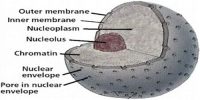Here explain some common types of Lipid:
Tri-glyceride (Fats & Oils): Tri- glyceride is a lipid, composed of fatty acid and glycerol. Triglyceride is formed by the combination of three molecules of fatty acid and one molecule of glycerol. Triglycerides are also known as neutral lipids because they can be hydrolyzed in the acidic and basic solutions.
Example: Fats, oils. Fats are saturated hydrocarbons and remain as the solid form in the normal temperature and have the high melting point (70°C).
Oils are unsaturated hydrocarbons and remain in liquid form at the normal temperature and have very low melting point (5°C)
Phosphotipid: The lipid which is formed by the coordination of glycerol, fatty acid and phosphate is said to be phospholipids. Examples: Lecithin, cephalin, plasminogen
Glycolipid: Glycolipids do not have phosphate but they base glucose or galactose instead. Photosynthetic organs of plants possess more glucose than galactose.
Steroid: Numerous isoprene units are combined together to form steroids and other organic compounds When a hydroxyl group (OH+) is present in the steroid it is called sterol Sterol is present in all plants, except bacteria and cyanobacteria. Steroids are usually 27-29 carbon compounds.
Terpenes: Terpenes are formed by numerous terpenoid (C5H8) units. Terpenes are found available in mint and salvia plants as volatile oils.
Lipoproteins: Lipoproteins are composed of lipids and proteins. Here cholesterol is attached to protein as a lipid.
Wax: Wax is a simple lipid. Here one molecule of fatty acid remains attached to a long chain of alcohol or cholesterol Wax is a 25-55 carbon compound. Since wax does not have any double bond, it is chemically inert.













